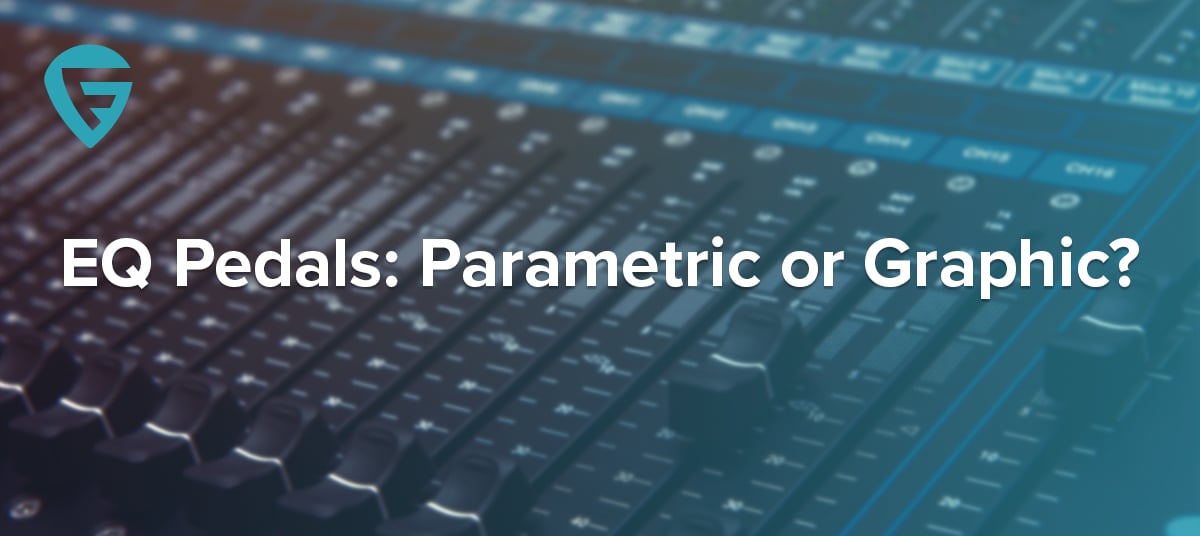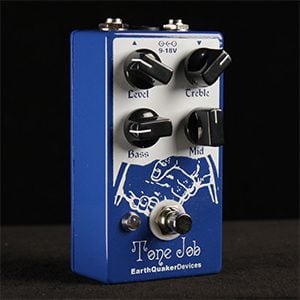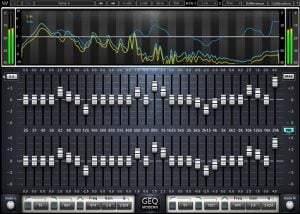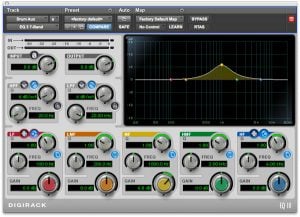- Home
- Instruments
- Gear
- Recording
- Lessons
- Reviews
- Blog

Ever since they appeared in their current form, EQ pedals have become one of the most instrumental tools a guitar player could have at their disposal. The sheer versatility one of these stompboxes adds to your tone is just too important to be overlooked. With that said, some of the best EQ pedals come in two standardized forms.
You have graphic EQs and parametric EQs. To a layman these two are probably not all that different; after all, they perform the same function, right? Not quite so. There is a significant difference between a parametric and graphic EQ, and that is exactly what we are going to talk about today.
 For the most part, the idea behind an EQ pedal is to give you more control over your tone by allowing you to adjust certain parts of your signal's frequency range. In that regard, you can boost mids, cut down on bass, level out the trebles and so on. How you're going to do that can vary depending on which type of pedal you use.
For the most part, the idea behind an EQ pedal is to give you more control over your tone by allowing you to adjust certain parts of your signal's frequency range. In that regard, you can boost mids, cut down on bass, level out the trebles and so on. How you're going to do that can vary depending on which type of pedal you use.
Graphic EQs are a bit more user-friendly and function in a no-nonsense way, while parametric EQs take a bit of research to figure out completely. Let's take a look at each specifically. If you would like to know how to properly use an EQ pedal, check out our article that deals with that subject in particular. ‘How To Get The Most Out Of Your EQ Pedal'
 The majority of audio EQs you have ever seen probably belong to the graphic variety. They are called graphic EQs because you have 6 or more frequency bands that you adjust with sliders. The path of those sliders is marked with different values, so you can quickly assess the situation with one glance at the EQ. Besides that, graphic EQs go straight to the point.
The majority of audio EQs you have ever seen probably belong to the graphic variety. They are called graphic EQs because you have 6 or more frequency bands that you adjust with sliders. The path of those sliders is marked with different values, so you can quickly assess the situation with one glance at the EQ. Besides that, graphic EQs go straight to the point.
There's usually no hidden features or abstract processes to worry about. You adjust your frequency bands, and you're good to go. This simplicity of use is exactly why so many guitar players favor graphic EQs over parametric ones. When you are on stage, in a low light environment and you need to make an adjustment to your tone, being able to do that quickly is valuable.
 Parametric EQs are more complex than graphic EQs. In many ways, you get a lot more control over the given frequencies than you have with graphic EQs. One of the more standard types of parametric EQs is the one that allows you to adjust three distinct parameters for each frequency band.
Parametric EQs are more complex than graphic EQs. In many ways, you get a lot more control over the given frequencies than you have with graphic EQs. One of the more standard types of parametric EQs is the one that allows you to adjust three distinct parameters for each frequency band.
We are talking level, bandwidth, and center of frequency. Level is your standard boost/cut function just like you see on a standard graphic EQ. Bandwidth allows you to extend or narrow down the range of that specific frequency band, which in turn allows you to be more or less precise with your adjustments. The center of frequency adjustment allows you to move the axis of that frequency band from let's say 20Hz to 15Hz or 30Hz.
Parametric EQs can definitely be more complex than that, which depends on the specific model of pedal you are using. This additional versatility is not going to be something most guitar players will even want to deal with. That type of control is interesting to those who need or want it, but not so much to those who just want to roughly shape their tone.
At the end of the day, if you are just starting out with EQ pedals, we strongly suggest that you go for a graphic EQ first. This way you will get familiar with this piece of gear in a painless and user-friendly way. Once you're comfortable, you can go on to explore the parametric side of the story.

Reader Interactions